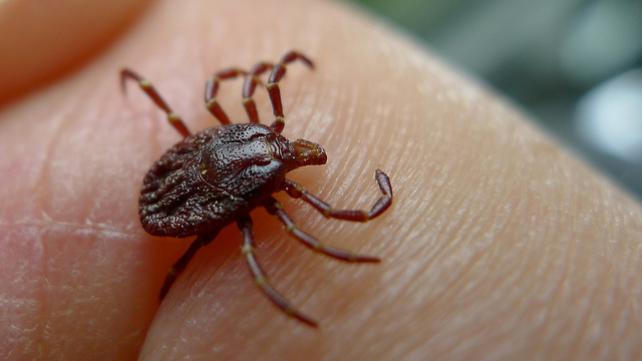
Scientists have discovered a new Lyme disease-causing bacteria in the United States, and it may bring even worse symptoms than its more familiar predecessor.
Lyme disease is the most commonly reported vectorborne illness in the United States, affecting more than 300,000 Americans each year. Until now, only one species of bacteria, Borrelia burgdorferi, was thought to cause Lyme disease, which is transmitted through the bite of the black-legged “deer” tick. But scientists from the U.S. Centers for Disease Control and Prevention and the Mayo Clinic have identified a second, closely-related species of bacteria, Borrelia mayonii, that can also cause Lyme disease in people bitten by the black-legged deer tick.
“This discovery adds another important piece of information to the complex picture of tick-borne diseases in the United States,” CDC microbiologist Jeannine Petersen said in an agency news release.
The researchers discovered the new bacterial species during an analysis of blood samples from patients in Minnesota, Wisconsin, and North Dakota who were suspected of having Lyme disease. Six of the samples in the analysis showed “unusual results,” prompting the Mayo Clinic team to contact the CDC for further investigation. After culturing the bacteria from the blood samples and analyzing their DNA sequences, the CDC researchers concluded that the bacteria were from a previously unidentified species — one that, although genetically related, was clearly different than the species previously known to cause Lyme disease in the U.S.
‘This is not a benign disease’
Preliminary findings suggest that the newly-discovered species may cause a more severe form of Lyme disease than Borrelia burgdorferi. While both cause fever, headache, rash, and neck pain in the first days after infection, and arthritis weeks after infection, Borrelia mayonii also appears to cause nausea and vomiting, diffuse rashes (rather than the telltale “bull’s-eye” rash usually associated with Lyme disease), and a higher concentration of bacteria in the blood, the researchers reported this week in The Lancet Infectious Diseases.
The most alarming finding was the presence of significant neurological abnormalities, which were detected in three of the six patients evaluated, including both of the children in the study. “They were so zonked out they couldn’t be woken up,” said study author Dr. Bobbi Pritt, a medical director in the division of clinical microbiology at the Mayo Clinic, in Rochester, Minnesota. Five of the six patients had fevers, and one had vision disturbances, Dr. Pritt said. Ultimately, two of the patients ended up requiring hospitalization.
“This is not a benign disease,” Dr. Pritt warned.
The researchers said Borrelia mayonii is likely a “recently emerged” organism since it did not appear in previous, extensive testing of blood samples of patients suspected of having Lyme disease. So far, it has only been found in the upper Midwest, according to the study. However, like we’ve seen with so many other disease vectors, climate change has allowed deer ticks to vastly expand their geographical range — and where the ticks are found, so are the diseases they carry. That’s why some experts think it’s only a matter of time before the newly-discovered bacteria takes hold in other parts of the country.
“While the distribution of B. mayonii is currently said to be limited, I don’t expect that to last,” infectious disease specialist Dr. Judy Stone wrote this week in Forbes magazine. “The deer ticks have greatly increased their range and will likely carry this new bacteria with them.”
In addition to Lyme disease, deer ticks often carry several other diseases that can be transmitted to humans, including anaplasmosis, babesiosis, ehrlichiosis, and Powassan virus, an emerging disease that appears to be on the move in the northeastern part of the country. Although it shares some symptoms with Lyme disease, Powassan virus differs in that there is no treatment currently available for it and it can be transmitted much more rapidly (meaning that the tick doesn’t have to be attached for very long to pass on the pathogen). According to Dr. Theodore Andreadis, of the Connecticut Agricultural Experiment Station, the virus typically causes more severe illness than Lyme disease and can even be fatal in some cases.
The CDC is working with researchers and state public health officials to gather more information about Borrelia mayonii and its short- and long-term impact on those who become infected. For now, the CDC recommends taking the following precautions to reduce your risk of tick bites, which are most common from April through September:
- Avoid wooded and bushy areas with high grass and leaf litter;
- Use insect repellent containing DEET when outdoors;
- Use products that contain permethrin on clothing;
- Wear clothing with long sleeves and pants;
- Bathe or shower as soon as possible after coming indoors to wash off and more easily find ticks that are crawling on you;
- Conduct a full-body tick check after spending time outdoors; and
- Examine gear and pets, as ticks can “ride” into the home and attach to a person later (and pets are also vulnerable to many tick-borne illnesses, including Lyme disease — so don’t forget about them!)
